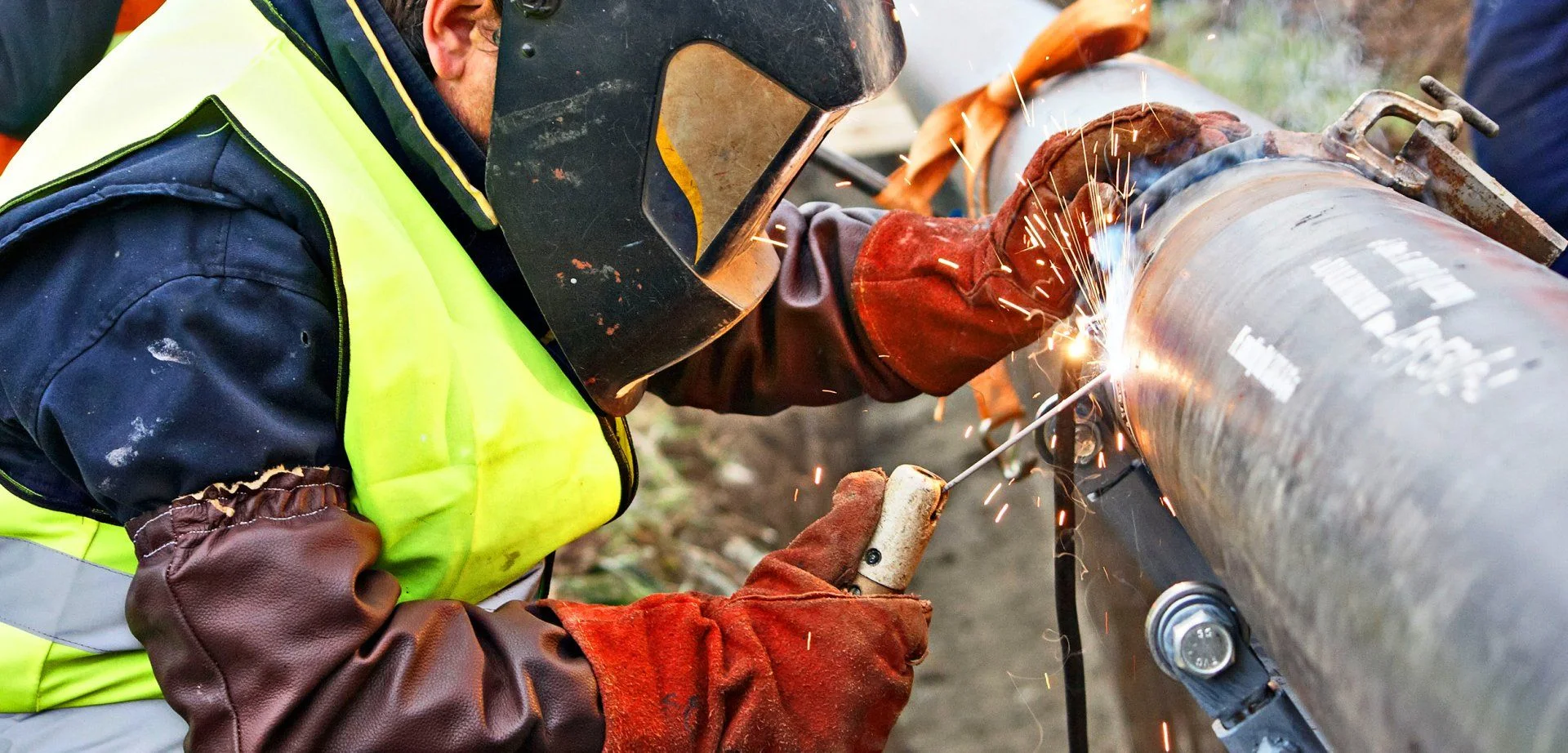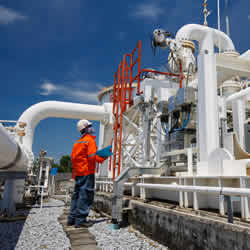Comprehensive Pipeline Welding Inspection: Protecting Facilities Stability
Comprehensive Pipeline Welding Inspection: Protecting Facilities Stability
Blog Article
Comprehending the Principles of Pipe Welding Assessment: Important Variables for Reviewing Weld Top Quality and Averting Failings
In the world of pipe welding assessment, the risks are indisputably high, demanding a detailed understanding of basic concepts to make certain weld top quality and alleviate failure risks. Numerous essential variables come right into play, including the selection of ideal products, the application of sophisticated evaluation techniques, and the acknowledgment of prevalent welding problems. Furthermore, adherence to regulatory criteria plays an essential function in maintaining system stability. Yet, the complexities inherent in these procedures raise important inquiries regarding best practices and arising technologies that might redefine inspection procedures-- questions that necessitate additional exploration.
Value of Weld Top Quality
The honesty of a pipeline is basically dependent on the quality of its welds, making weld high quality an essential consider making sure secure and reliable operation. A pipe weld acts as a junction point where materials are joined, and any deficiencies in this area can result in considerable structural weaknesses. Poor weld quality can result in leaks, ruptures, and devastating failures, positioning major safety risks and environmental risks.
Several factors add to the quality of a weld, consisting of the selection of welding procedure, the abilities of the welder, and the conditions under which the welding is carried out - Pipeline Welding Inspection. Inadequate preparation, inappropriate warmth input, and contamination can endanger weld stability, resulting in issues such as porosity, incomplete blend, or splits. As a result, strict quality assurance steps must be applied throughout the welding procedure to alleviate these risks
Additionally, the lasting efficiency of a pipeline is greatly affected by the toughness of its welds. Premium welds not only boost the general strength of the pipe however likewise extend its solution life, minimizing the need for pricey fixings and downtime. For this reason, making sure exceptional weld quality is vital in pipeline layout and maintenance practices.
Secret Evaluation Strategies
Making sure weld quality demands the application of effective examination methods to identify possible defects before they cause failures. Pipeline Welding Inspection. Amongst one of the most widely made use of techniques are visual evaluation, radiographic testing (RT), ultrasonic screening (UT), and magnetic fragment screening (MT) Each technique is and serves a distinctive function chosen based upon the particular needs of the pipeline job
Visual evaluation is the first line of defense, enabling assessors to analyze surface area problems, positioning, and general workmanship. Radiographic testing provides a detailed view of inner weld honesty by utilizing X-rays or gamma rays to find subsurface problems.
Ultrasonic testing employs high-frequency sound waves to review the density and stability of welds, making it suitable for finding interior gaps. Magnetic bit testing is a dependable approach for recognizing surface and near-surface defects on ferromagnetic products by using magnetic fields and fine ferrous fragments. By using these essential inspection strategies, pipe welding inspectors can ensure the best standards are kept, eventually leading to more secure and a lot more dependable pipe systems.
Typical Welding Problems
In the realm of pipe welding, recognizing typical welding defects is critical for preserving architectural stability and safety. These issues can result in tragic failures otherwise identified and resolved quickly. Amongst the most widespread problems are porosity, which takes place when gas entraps in the weld steel, producing gaps that compromise the joint. An additional significant concern is lack of combination, where the weld steel does not sufficiently bond with the base product, jeopardizing the joint's toughness.

Splits are also an important concern, manifesting in different kinds such as hot fractures, chilly splits, and origin cracks. Each type presents one-of-a-kind challenges and requires certain examination strategies for detection. Undercut is another defect that can decrease the weld's cross-sectional area, causing anxiety focus factors, while slag inclusion takes place when non-metallic product becomes trapped in the weld swimming pool, adversely affecting the mechanical buildings of the weld.
In addition, incorrect grain form can lead to uneven tension distribution. Acknowledging these typical problems is necessary for welders and assessors alike, as very early detection and adjustment are important to ensuring the longevity and integrity of pipeline systems.

Materials and Their Influence
Picking the suitable products for pipe welding significantly influences the general efficiency and integrity of the bonded joints. The selection of base steels, filler materials, and finishings plays a vital function in identifying the toughness, rust resistance, and toughness of the welds. For instance, carbon steel is commonly made use of for its balance of stamina and cost, yet it might be susceptible to rust in certain atmospheres, requiring the use of safety coatings or corrosion-resistant alloys.
Furthermore, dissimilar metal welding requires careful consideration of thermal expansion homes and prospective galvanic rust. The compatibility of click here to read materials can significantly affect the microstructure of the weld, leading to variants in mechanical properties. For instance, stainless-steel uses exceptional rust resistance but may call for certain filler materials to guarantee a sound weld joint.
In enhancement, the effect of temperature and environmental problems on product choice can not be ignored. High-strength steels may shed ductility at elevated temperatures, while low-temperature applications could need materials with enhanced sturdiness. Inevitably, comprehending the implications of product options is important for attaining ideal weld quality and preventing failings in pipeline systems.

Governing Requirements and Compliance
Governing criteria and conformity play an essential function in pipe welding, developing the structure within which risk-free and efficient methods are kept. These criteria are created by numerous companies, including the American Society of Mechanical Engineers (ASME), the American Welding Society (AWS), and the Pipeline and Hazardous Products Safety Management (PHMSA) Sticking to these laws makes certain that welding treatments satisfy the required quality and safety standards.
Conformity with governing criteria is crucial not just for guaranteeing the integrity of the welds yet likewise for safeguarding the environment and public safety and security. Examiners are tasked with validating that welding operations follow these requirements through strenuous assessments of both the processes and the last welds. This includes reviewing welder credentials, welding procedures, and the products utilized.
Failing to abide by established laws can result in substantial repercussions, consisting of expensive repairs, lawful liabilities, and disastrous failures. As a result, companies should incorporate conformity right into their operational methods, fostering a culture of safety and security and high quality. Click This Link Normal training and audits are vital parts in maintaining adherence to these regulative criteria, guaranteeing that all employees are well-informed and furnished to promote the highest degrees of pipe welding quality.
Final Thought
In verdict, a comprehensive understanding of pipeline welding assessment is essential for ensuring weld quality and stopping failings. By using key inspection methods and acknowledging typical welding issues, inspectors can efficiently analyze the integrity of welds. Consideration of material selection and adherence to regulatory standards even more improve the dependability and security of pipeline systems. Eventually, these methods add to the prevention of leaks and devastating failures, underscoring the vital value of extensive assessment processes in pipeline building and maintenance.
In the realm of pipe welding assessment, the stakes are undoubtedly high, necessitating a comprehensive understanding of fundamental concepts to guarantee weld quality and minimize failing risks (Pipeline Welding Inspection).The honesty of a pipeline look at this site is fundamentally dependent on the quality of its welds, making weld top quality an essential aspect in guaranteeing efficient and secure operation.Numerous elements add to the high quality of a weld, including the option of welding procedure, the skills of the welder, and the problems under which the welding is carried out. Undercut is an additional flaw that can decrease the weld's cross-sectional location, leading to tension focus points, while slag addition takes place when non-metallic material comes to be trapped in the weld swimming pool, adversely impacting the mechanical homes of the weld
In conclusion, a detailed understanding of pipe welding evaluation is essential for ensuring weld high quality and protecting against failures.
Report this page